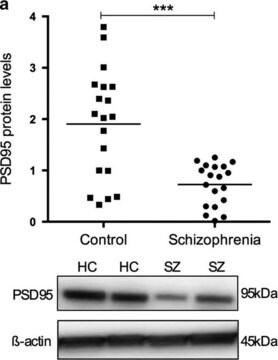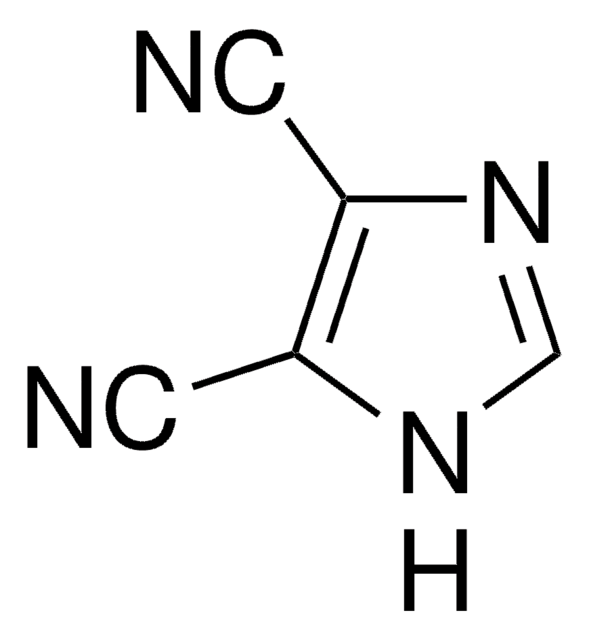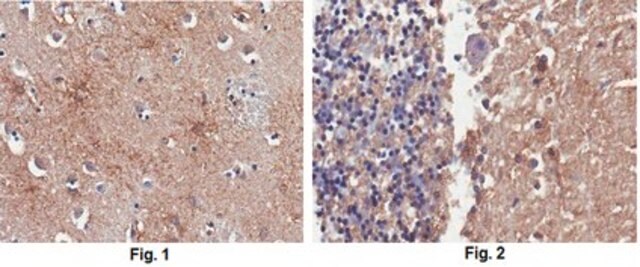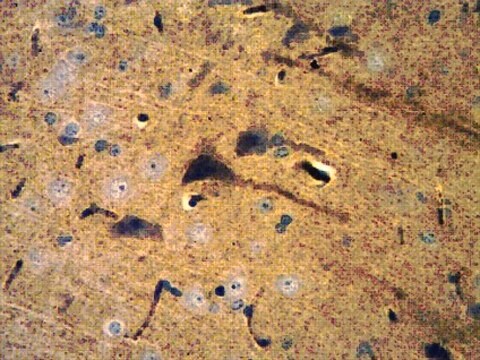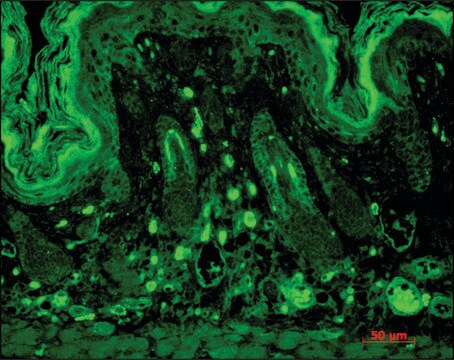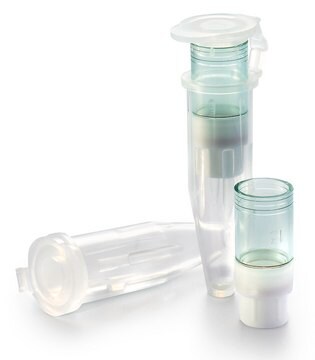MAB1596
Anti-Post Synaptic Density Protein 95 Antibody, clone 6G6-1C9
clone 6G6-1C9, Chemicon®, from mouse
Synonym(s):
PSD-95
About This Item
Recommended Products
biological source
mouse
Quality Level
antibody form
purified immunoglobulin
antibody product type
primary antibodies
clone
6G6-1C9, monoclonal
species reactivity
mouse, rat, bovine
manufacturer/tradename
Chemicon®
technique(s)
immunocytochemistry: suitable
immunohistochemistry: suitable
western blot: suitable
isotype
IgG2a
NCBI accession no.
UniProt accession no.
shipped in
dry ice
target post-translational modification
unmodified
Gene Information
bovine ... Dlg4(100137840)
mouse ... Dlg4(13385)
rat ... Dlg4(29495)
General description
Specificity
Immunogen
Application
Representative image from a previous lot.
Confocal fluorescent analysis of PC12 using MAb1596 Mouse mAB (Red). Actin filaments have been labeled with Alexa Fluor 488 -Phalloidin (Green). Nuclear is stained with DAPI (Blue). Membrane staining positive.
Immunocytochemistry:
12.5 µg/mL
Western Blot:
1-5 μg/mL (ECL) on rat brain lysate (20 μg).
Optimal working dilutions must be determined by the end user.
Neuroscience
Synapse & Synaptic Biology
Quality
Target description
Linkage
Physical form
Storage and Stability
Handling Recommendations: Upon first thaw, and prior to removing the cap, centrifuge the vial and gently mix the solution. Aliquot into microcentrifuge tubes and store at -20°C. Avoid repeated freeze/thaw cycles, which may damage IgG and affect product performance. Note: Variabillity in freezer temperatures below -20°C may cause glycerol containing solutions to become frozen during storage.
Analysis Note
Mouse brain, rat brain tissue.
Other Notes
Legal Information
Disclaimer
Not finding the right product?
Try our Product Selector Tool.
recommended
Storage Class Code
10 - Combustible liquids
WGK
WGK 2
Regulatory Listings
Regulatory Listings are mainly provided for chemical products. Only limited information can be provided here for non-chemical products. No entry means none of the components are listed. It is the user’s obligation to ensure the safe and legal use of the product.
JAN Code
MAB1596:
Certificates of Analysis (COA)
Search for Certificates of Analysis (COA) by entering the products Lot/Batch Number. Lot and Batch Numbers can be found on a product’s label following the words ‘Lot’ or ‘Batch’.
Already Own This Product?
Find documentation for the products that you have recently purchased in the Document Library.
Our team of scientists has experience in all areas of research including Life Science, Material Science, Chemical Synthesis, Chromatography, Analytical and many others.
Contact Technical Service

